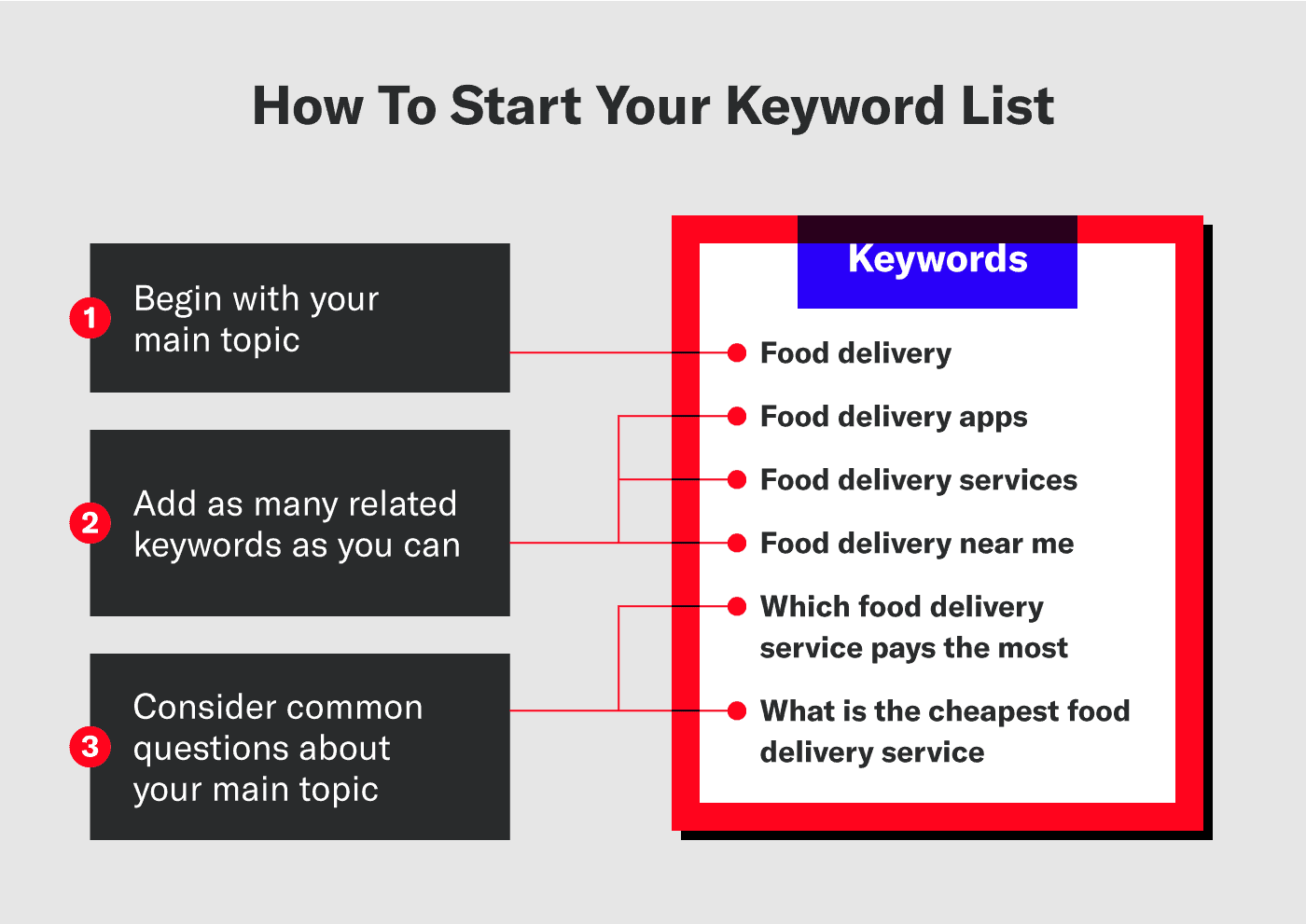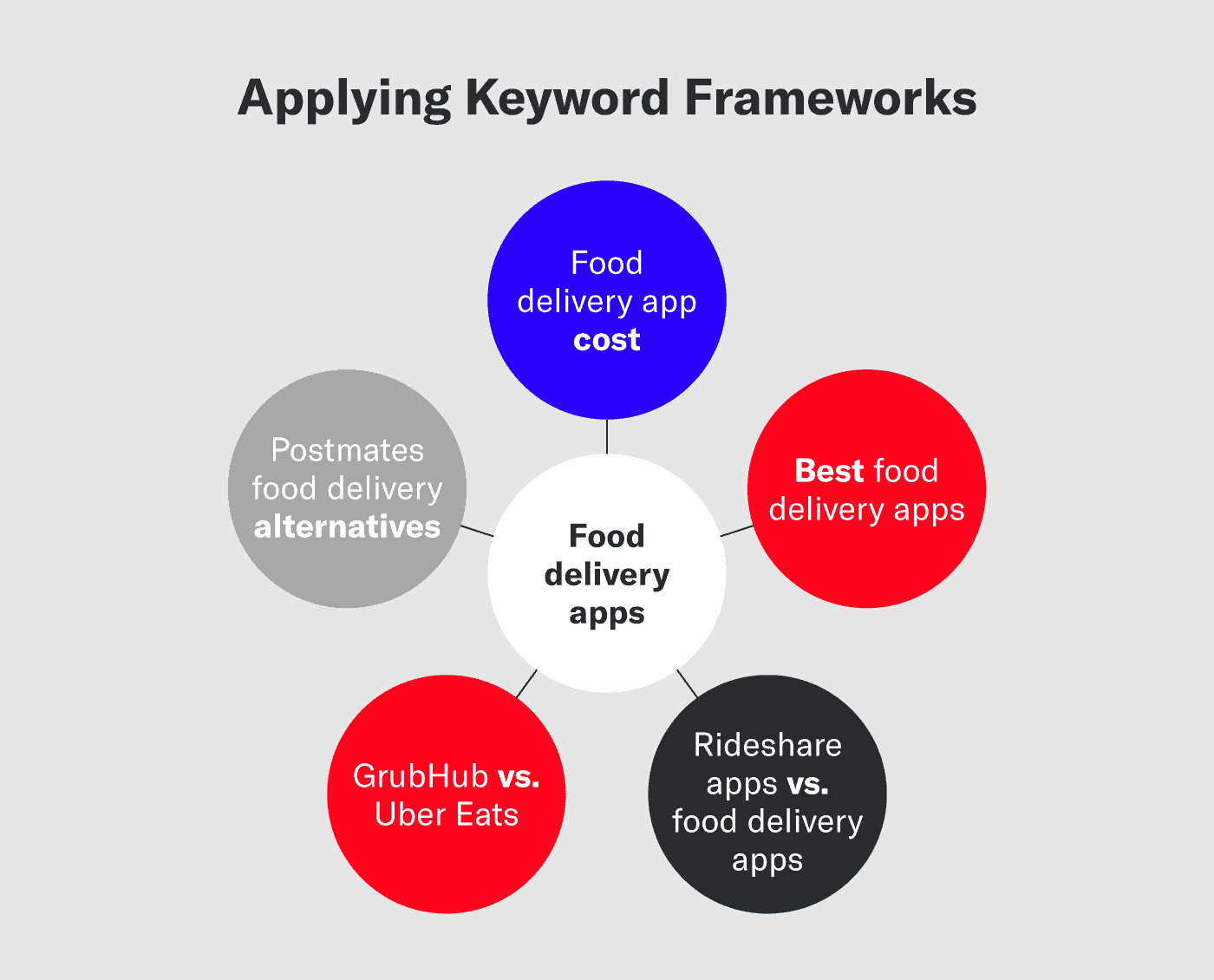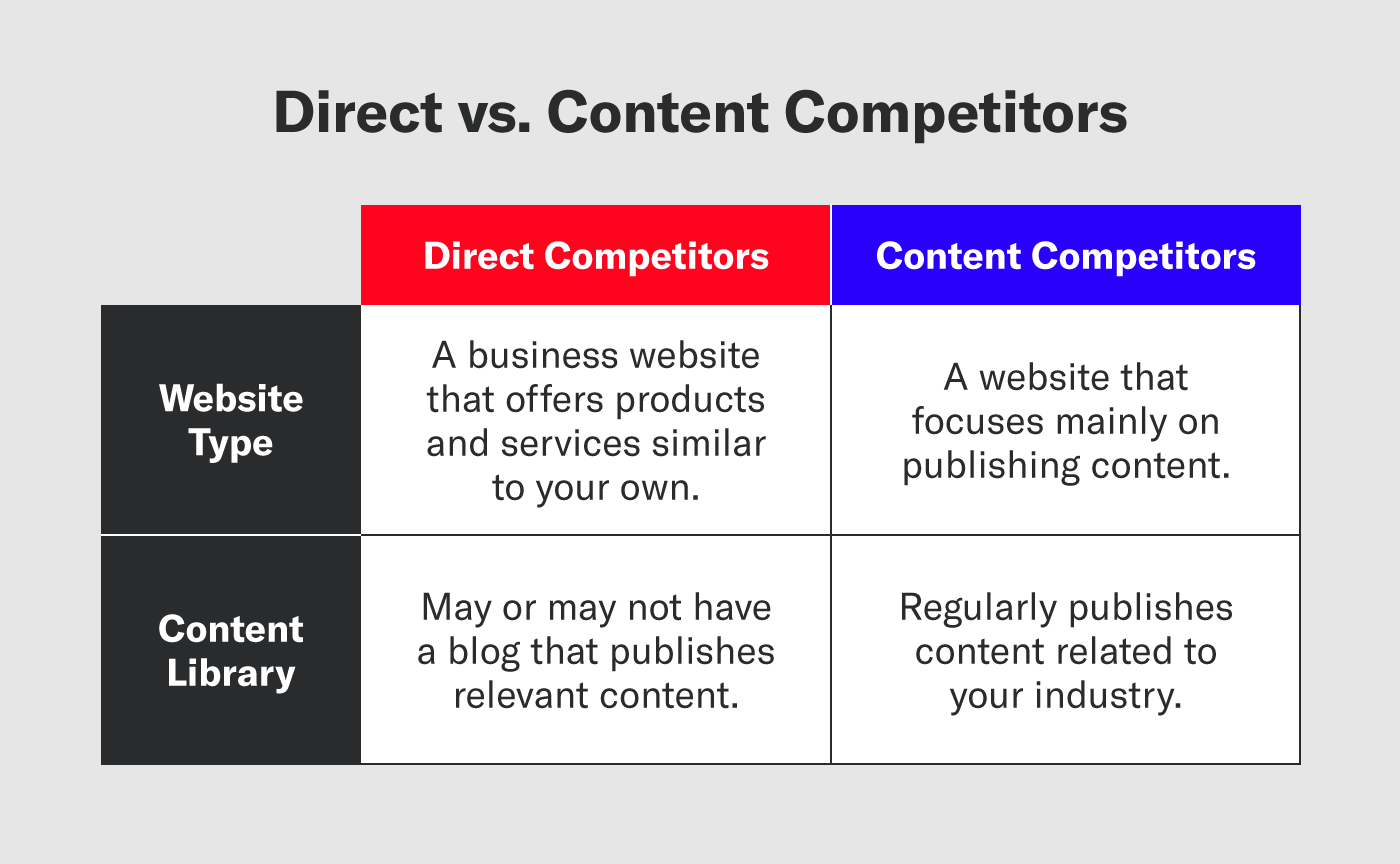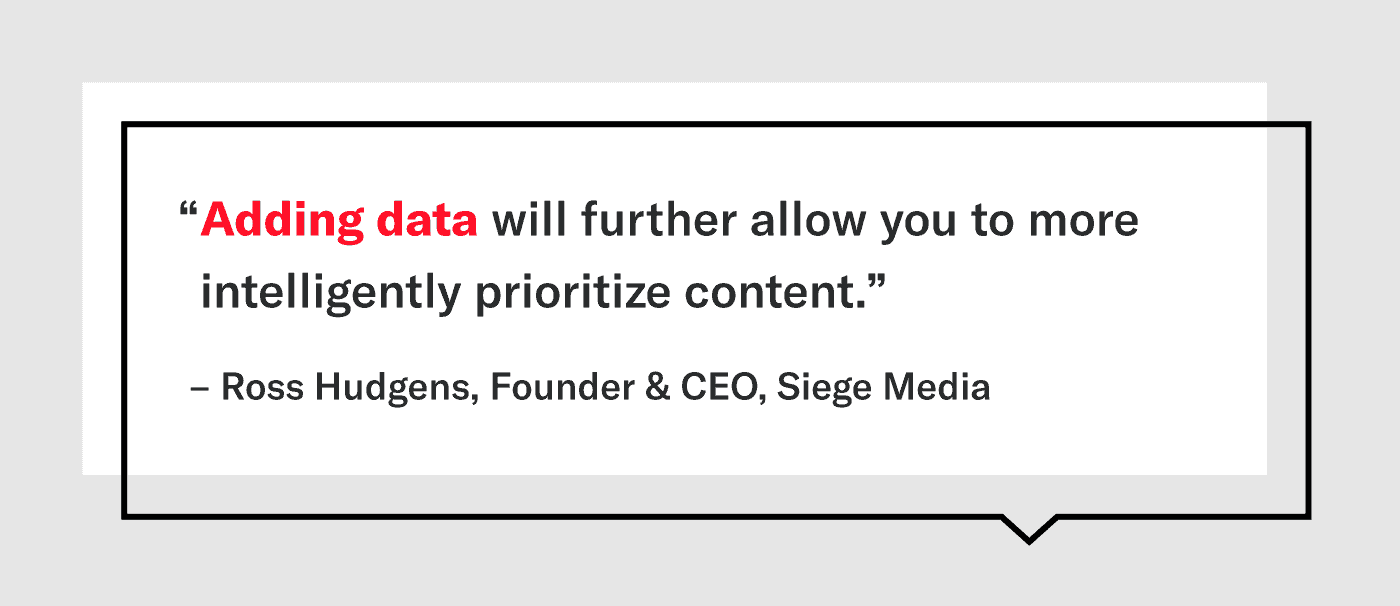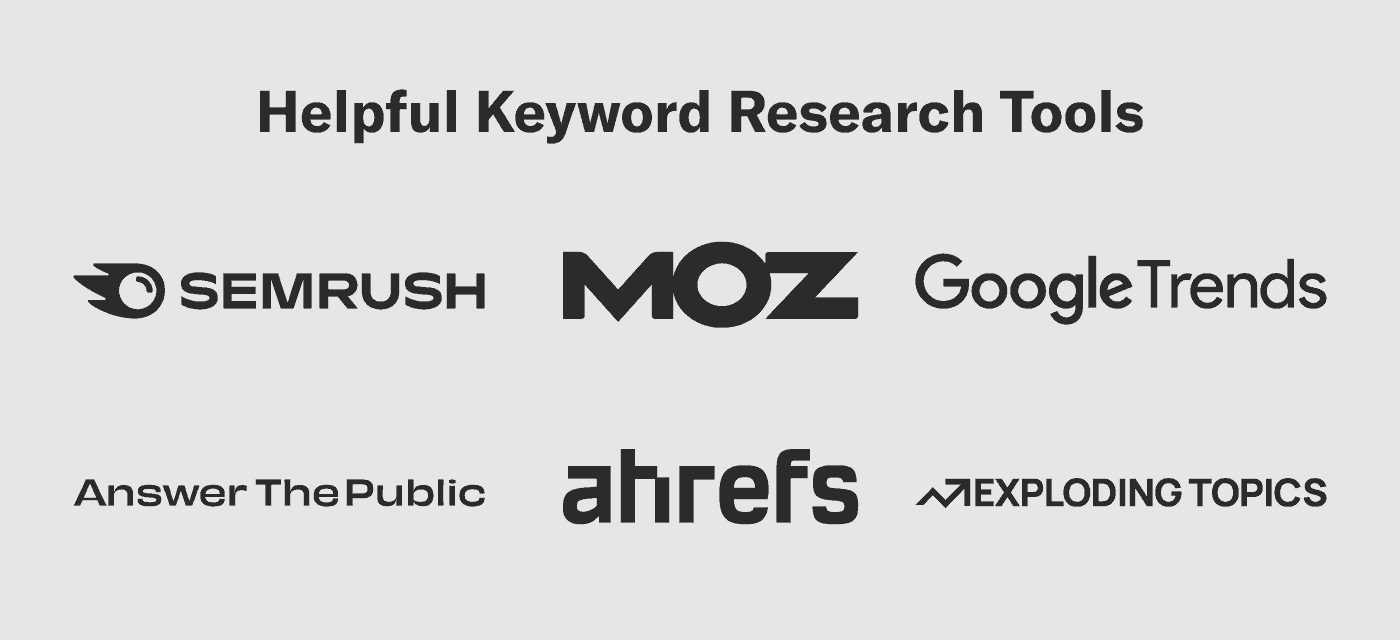Every strong content strategy has strong keyword research behind it. At least that’s what has helped us generate over $86 million in traffic value per year for our clients.
What Is Keyword Research?
Keyword research is the process of discovering keywords you can target to create relevant content for your customers, ideally for the highest value and lowest effort.
If content marketing is a house, then keyword research is the ground it’s built on.
Keyword research is the process of uncovering keywords you can target to create relevant and high-converting content for your customers, ideally for the highest value and lowest effort.
Without keyword research, you risk wasting time creating irrelevant content your target audience will never see. Worse yet, you risk creating low-performing content that drags down the entire health of your blog.
So, are you eager to start creating content but unsure where to begin?
In this how-to guide for 2023, we’ll go over exactly how to do keyword research for SEO, how to prioritize topics, and tools you can use to help along the way.
- Get To Know Your Audience
- Build a List of Keywords
- Use Keyword Frameworks
- Analyze Your Competitors
- Prioritize Your Keywords
- Use Keyword Research Tools
Let the research begin!
Step 1. Get To Know Your Audience
While you might want to immediately jump into a popular keyword suggestion tool, doing so will skip over one of the most important aspects of creating SEO-friendly content: audience research.
Start with a keyword research tool and you’ll find high difficulty terms that don’t convert.
Start with audience research and you’ll find low difficulty terms that do.
— Ross Hudgens (@RossHudgens) December 1, 2021
Whether you’re new to a company or you’re an industry veteran, starting the keyword research process with a deep dive into the industry you’re writing about is imperative to understand your target audience.
Here are our go-to places to learn about a new target audience:
- Sales calls: By listening to your customers describe their problems, you can get a better idea of how they would search for solutions to those problems. You can do this by utilizing sales tools that record and organize your sales calls, giving you valuable insights and patterns you can leverage in your keyword research process.
- Email form submissions: Similar to sales calls, email form submissions are a useful resource for better understanding the needs of your customers.
- Product or service reviews: Analyzing product and competitor reviews is another great way to identify common pain points and topics for which content marketing can help support your customers and solve their problems.
- Relevant social media channels: To help keep abreast of news in your desired field, try following relevant social media channels, including any thought leaders or competitors in your industry.
- Thought leadership newsletters: Like social media, thought leadership newsletters within your industry can be a fruitful resource for staying informed and sparking keyword research ideas.
- Conversations with customers: Another often overlooked keyword research strategy is talking to your customers and asking them questions directly. By opening a dialogue between you and your target audience, you can figure out the types of information and content they’re looking for and utilize that knowledge in your research.
Now that you’ve stepped inside the shoes of your audience, you can start brainstorming content with a better idea of what your customers are searching for and be well on your way to creating effective and engaging content.
Step 2. Build a List of Keywords
Next, you’ll want to open up a blank spreadsheet and begin building a list of keyword ideas based on the information you learned from getting to know your audience. Put yourself into the minds of your buyers and start writing down the queries you would search for to help solve your problems.
While writing down these keywords, don’t worry about adding any data, as the most important thing is getting all of your ideas onto the page.
After you’ve exhausted all of your keyword ideas from your audience research, you can start exploring other methods for finding keywords for SEO, including the use of keyword frameworks.
Step 3. Use Keyword Frameworks
Keyword frameworks are common content types that are proven to drive conversions. Examples of keyword frameworks include:
- PRODUCT cost
- PRODUCT vs. PRODUCT
- KEYWORD template
- INDUSTRY JARGON
- COMPETITOR vs. you
- COMPETITOR alternatives
- What is INDUSTRY JARGON
- Best PRODUCT
How to generate $195,368 in sales from keywords with zero search volume:
Keyword frameworks.
Common keyword frameworks applied to your industry’s products, especially new ones, are a tried and true method of generating sales. What are some examples? pic.twitter.com/Q0CXQWy5Xb
— Ross Hudgens (@RossHudgens) December 15, 2021
Let’s say you are brainstorming keyword ideas for a running shoe company called Flyrunner. By expanding your research with keyword frameworks, you can add new keywords to your list that target high-converting content types, including:
- Running shoes cost
- Flyrunner vs. Nike
- Adidas running shoe alternatives
- What is drop in a running shoe?
- Best running shoes
In some cases, these keyword frameworks may provide you with keywords that have little to no search volume. But they’re still worth adding to your list, as bottom-funnel keywords can drive conversions even without a high keyword search volume.
Now that you’ve prioritized audience research and keyword frameworks, you’ve likely already found SEO keywords that are sure to stand out from other pieces of content marketing in your industry. Let’s continue the momentum.
Step 4. Analyze Your Competitors
Now that you’ve used audience research to get a head start on your keyword list, it’s time to analyze both your direct competitors and content competitors.
Direct competitors are other companies in the same industry as you, whereas content competitors are other sites that publish content on similar topics. For example, if you were doing SEO for a fintech company that offered online banking, SoFi would be a direct competitor and NerdWallet would be a content competitor.
After you’ve established your direct and content competitors, punch their websites into a keyword research tool (we’ll dive deeper into these later) to uncover the topics of their top-performing pages. Once you’ve figured out what topics your competitors are covering, add around 50-200 of these topics to your existing keyword list.
Step 5. Prioritize Your Keywords
With a solid list of keywords, you can now begin adding data to your spreadsheet to help prioritize which keywords are best for your business.
A great place to start is with a KOB analysis, or Keyword Opposition to Benefit Analysis.
A KOB analysis considers your revenue potential and ROI in combination with your competition’s. This can help you prioritize your most beneficial and rankable content first, which can help propel you towards more difficult topics in the future.
To calculate a KOB score, follow this equation:
- (Total Traffic Value of the Top-Ranking URL / Keyword Difficulty)
Let’s say you are targeting the keyword “best food delivery apps.”
After inputting the keyword and top-ranking URL into your favorite SEO tool, you uncover the following data:
- Keyword difficulty: 62
- Search volume: 1000
- Total traffic value: $43,200
Now that you have this keyword specific data, you can calculate your KOB score:
- ($43,200 / 62) = 720
You can take this a step further by multiplying your KOB score by a relevancy score, which is a 1-3 scale (1 = low relevancy, 3 = high relevancy) used to determine how good of a fit the content is for your site.
To calculate a topic’s KOB score with topic relevance considered, follow this equation:
- (Page Traffic Value / Keyword Difficulty) x Relevancy Score
Out of context, this score means nothing. But in combination with additional research and a strong list of keywords, a KOB score can help you prioritize which keywords to target first.
To help you hit the ground running on your keyword research journey, download our ready-to-use KOB analysis spreadsheet.
With your keyword research in hand, you may now start thinking about the specifics of your project plan.
While your KOB analysis is great for finding low-competition, high-benefit keywords, you still need to prioritize target topics and keywords to make sure you’re capitalizing on the content you can rank for.
Ask yourself these three things when preparing your strategy:
- What is your Domain Authority (DA)?
- What internal resources do you have?
- Are you creating top-, middle-, or bottom-funnel content?
For example, if your DA is lower than 70, your best bet for strong content creation is to prioritize topics or keywords with a difficulty rating lower than 60 or 70.
On the flip side, if your domain authority is 70+, your prioritization should consider what you can rank for without promotion.
By understanding your domain’s strengths and weaknesses, you can better determine which content is best for your business.
Once your project plan is solidified, refer back to your KOB analysis to adjust the scope. This is the amount of time you’ll need to effectively create each piece of content. For example, interactive content such as a calculator will likely take more time than a simple SEO post.
To help you get a more in-depth understanding of keyword terms and their purposes to maximize your content opportunities, keep these 12 factors in mind.
Top Keyword
The top keyword is the most relevant keyword with the highest search volume. By targeting the top keyword, you can maximize your overall topic opportunity.
Search Volume
Search volume is the average number of times a keyword is searched per month.
Keyword Difficulty
Keyword difficulty is a metric used by SEO tools to gauge how difficult it will be to rank for a keyword. The number can vary across different keyword research tools. For this reason, we recommend using one keyword research tool as your point of truth.
Long-Tail Keywords
Long-tail keywords are lengthier keyword phrases related to your top keyword. For example, a long-tail keyword related to “SEO tools” would be “what are SEO tools.”
Search Intent
Search intent is the reason for an online search. Depending on the keyword, the SERP may show results for different types of search intent, including:
- Informational intent: The user is searching to discover information.
- Navigational intent: The user is looking for a specific search result.
- Transactional intent: The user is looking to buy something.
- Commercial investigation: The user is in the market for something specific but wants to compare options.
The type of search intent can help you determine whether or not the keyword you’ve selected is a good fit for your business.
Top-Ranking URL
The top-ranking URL is the post at the top of the SERP that is most similar to your site. For some topics, the first URL you see may be a sales page or a site like Wikipedia that is far different from your own. Because of this, you’ll want to disregard those sites and focus on the highest-ranking page similar to your website.
Total Organic Traffic
Once you’ve determined the top-ranking URL for your keyword, you can use an SEO keyword research tool to find the total organic traffic, which is the page’s estimated monthly organic search traffic.
Total Traffic Value
Also pulled from the top-ranking URL, total traffic value is the estimated dollar value of a URL’s monthly organic search traffic.
Links To Top Result
The links to the top result are the number of unique domains linking to the top-ranking URL, and can help indicate a topic’s passive link building potential — and, in turn, potentially your passive link building potential. Because this metric only counts the number of referring domains, it will not count multiple links from the same site.
Relevancy Score
A relevancy score is a 1-3 ranking scale used to indicate how relevant the keyword is to your business.
- You can only mention your product or service sparingly
- You can talk about your product or service some of the time
- You can talk about your product or service throughout the entire blog post
KOB Score
The Keyword Opposition to Benefit (KOB) score is completed through a KOB analysis, a method you can use to identify topics in your industry that will deliver the most traffic value with the least competition.
To calculate a topic’s KOB score with topic relevance considered, follow this equation:
- (Page Traffic Value / Keyword Difficulty) x Relevancy Score
By calculating the KOB score of each keyword, you can quickly determine which topics you should prioritize first when building out your content strategy.
Scope
The final metric you’ll want to record is the scope per asset for each keyword. This is the number of hours that you’ll have to dedicate to create a piece of content for the selected keyword.
For example, creating interactive content targeting the keyword “rent affordability calculator” will take much longer than a blog post targeting”what is renters insurance.”
Step 6. Use Keyword Research Tools
While it’s important to prioritize audience research and put yourself in the shoes of your customers, it’s OK to lean on content marketing tools to gather crucial data and spark new topic ideas. Examples of popular keyword research tools include:
- Ahrefs: Ahrefs is an SEO keyword research and analysis tool that allows you to analyze keywords, SERPs, links, search traffic, rankings, and more. We use Ahrefs every day to help gather valuable data in the keyword research process.
- Moz: Moz is another SEO research tool that is similar to Ahrefs. Compared to Ahrefs, Moz is a little cheaper, but you are limited to research data specifically for Google, whereas Ahrefs provides data from multiple search engines.
- Semrush: Semrush also includes similar features to Ahrefs and Moz and is marketed as an online marketing tool. In addition to keyword research, Semrush also provides you with PPC campaign data.
- AnswerThePublic: AnswerThePublic is a search listening tool that utilizes Google autocomplete data to provide you with unique keyword ideas.
- Exploding Topics: Exploding Topics is a useful tool that you can use to help get ahead of rapidly growing topics that could be next to blow up.
- Google Trends: Google Trends can help you discover what’s trending in your industry and can help spark ideas of keywords you should include in your research.
With all this said, keyword research is only the beginning when creating content that ranks.
If you’d like a team of industry experts in your corner, our content marketing services can help you create content that drives conversions and reaches your audience organically.
FAQs About Keyword Research
Have more questions about keyword research? We’ve got the answers.
Are There Free Keyword Research Tools?
Yes, there are free keyword search tools. Often limited in features compared to their paid alternatives, keyword suggestion tools like Google Keyword Planner, Moz Keyword Explorer, and Keyword Surfer are free to use.
Are SEO and Keyword Research the Same?
While they are different, keyword research is a crucial part of SEO and is used to create content that will rank on search engines.
Should You Conduct Keyword Research for Paid Campaigns?
Yes. Whether for organic search or paid campaigns, keyword research is an essential method you can use to create engaging and relevant content for your audience.



